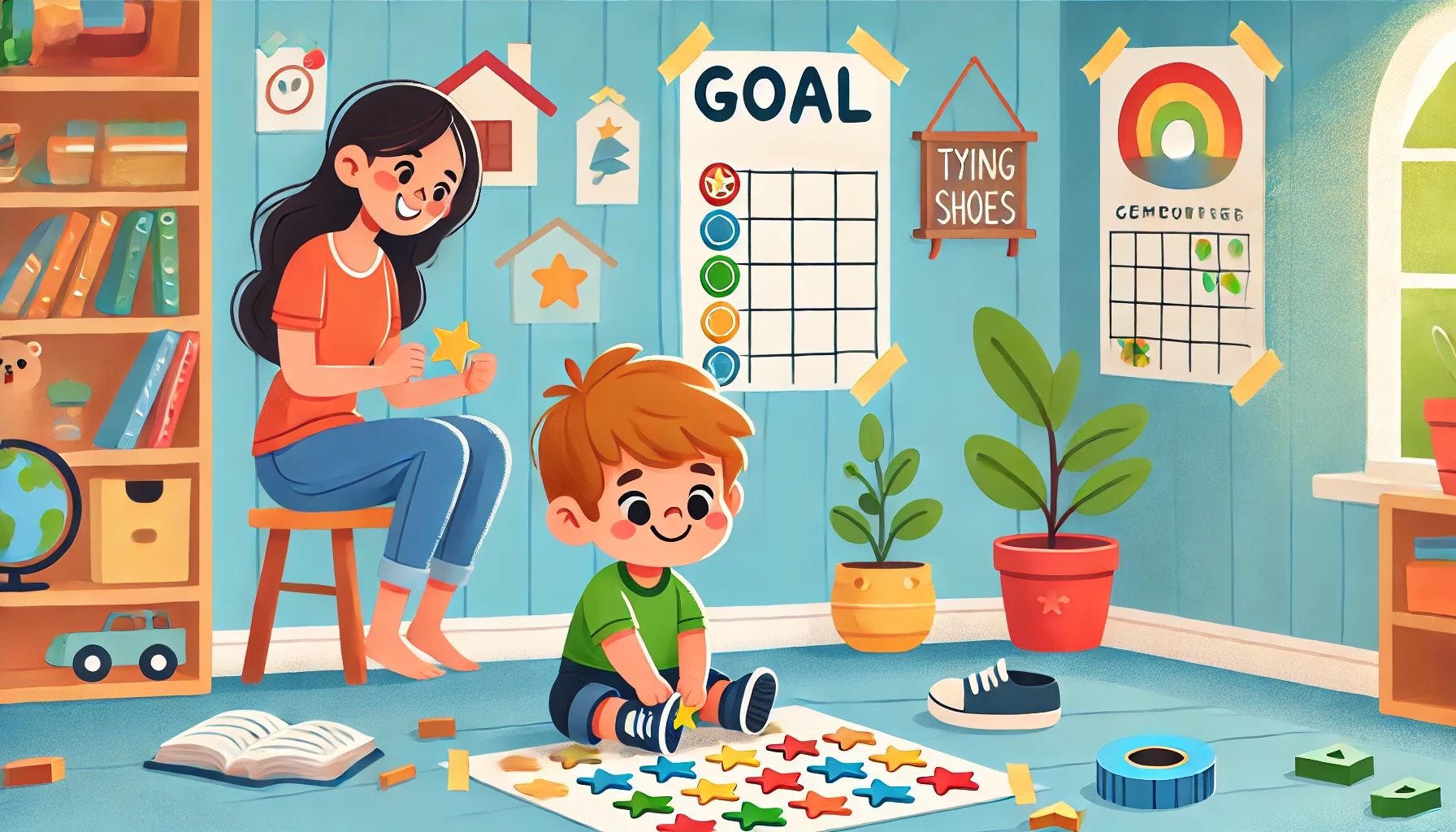How to Teach Young Children About Setting Goals and Working Toward Them
Teaching young children about setting goals helps them build confidence, motivation, and a sense of purpose. When kids learn to set and achieve small goals, they develop skills that prepare them for success in school and in life. Through fun, age-appropriate activities and consistent support, parents can guide their children toward becoming goal-oriented and resilient individuals. In this article, we’ll explore practical strategies to introduce goal-setting to young children.
Why Goal-Setting is Important for Kids
- Encourages focus and determination – Helps children stay on task.
- Develops patience and perseverance – Teaches that good things take time.
- Builds self-confidence – Shows kids they can achieve what they set their minds to.
- Fosters planning and organization – Helps break down bigger tasks into smaller steps.
- Instills a growth mindset – Promotes learning through effort and persistence.
1. Explain What a Goal Is in Simple Terms
Start by helping children understand the basic idea of what a goal is.
Activity Idea:
- Say: “A goal is something you want to do, and you work hard to make it happen.”
- Use examples they understand: “Learning to ride a bike” or “Finishing a puzzle.”
- Ask: “What is something you want to learn or do?”
What Kids Learn:
- That goals are dreams with a plan.
- How working toward something takes time and effort.
- That they are in control of their progress.
2. Set Small, Achievable Goals Together
Start with easy wins to build momentum and confidence.
Activity Idea:
- Work with your child to set a simple goal like “I will brush my teeth every morning this week.”
- Use a goal tracker (like a chart with stickers) to visualize progress.
- Celebrate when the goal is reached, even if it’s something small.
What Kids Learn:
- That progress happens step by step.
- The excitement of seeing improvement.
- The importance of follow-through.
3. Break Big Goals into Small Steps
Teaching children to divide goals into smaller tasks makes them easier to manage.
Activity Idea:
- If the goal is to build a LEGO set, break it down:
- Find all the pieces
- Sort them by color
- Follow each step of the instruction
- Track each step and offer encouragement along the way.
What Kids Learn:
- That big goals don’t need to be overwhelming.
- How to tackle challenges one step at a time.
- The importance of planning ahead.
4. Use Visuals and Tools to Stay Motivated
Visual aids make goal-setting fun and easy to understand for young children.
Activity Idea:
- Use a “goal board” with pictures of what they’re working toward.
- Make a progress ladder they can climb with each success.
- Create a reward system with non-material rewards (extra story time, choosing dinner).
What Kids Learn:
- That progress can be fun and exciting to track.
- The joy of seeing how far they’ve come.
- That effort brings positive results.
5. Praise Effort, Not Just Results
Encourage your child to keep going, even when the goal is challenging.
Activity Idea:
- Say: “You worked so hard on that drawing, even when it got tricky!”
- Focus on their commitment and effort, not just the final outcome.
- Help them reflect by asking: “What helped you keep going?”
What Kids Learn:
- That trying hard matters more than being perfect.
- How persistence leads to improvement.
- That mistakes are part of learning.
6. Model Goal-Setting in Daily Life
Let children see you working toward your own goals.
Activity Idea:
- Share your goals: “I’m trying to read a book every month.”
- Talk about the steps you’re taking and the challenges you face.
- Celebrate your own small successes in front of them.
What Kids Learn:
- That everyone sets goals and works to achieve them.
- That adults also face setbacks and keep going.
- The value of lifelong learning and growth.
7. Reflect and Adjust Goals as Needed
Teach children that goals can change—and that’s okay.
Activity Idea:
- At the end of the week, talk about what worked and what didn’t.
- Ask: “Would you like to try a different goal next week?”
- Help them shift the goal if it feels too hard or too easy.
What Kids Learn:
- That flexibility is part of goal-setting.
- How to self-reflect and improve their approach.
- The importance of listening to themselves.
8. Celebrate Successes—Big and Small
Recognizing success builds confidence and makes children excited to set new goals.
Activity Idea:
- Clap, cheer, or give a high-five when they meet a goal.
- Make a “goal wall” with pictures or drawings of what they accomplished.
- Talk about how proud they feel and what they want to try next.
What Kids Learn:
- That their hard work is meaningful.
- The reward of achieving something they worked for.
- The motivation to keep setting and reaching new goals.
Final Thoughts
Teaching young children about setting goals and working toward them is a powerful way to build self-confidence, responsibility, and motivation. With simple steps, visual tools, and ongoing encouragement, parents can help children understand the joy of achieving something they’ve worked for—and inspire a lifelong love for learning and personal growth.
